
Beckenried is a municipality in the canton of Nidwalden in Switzerland.
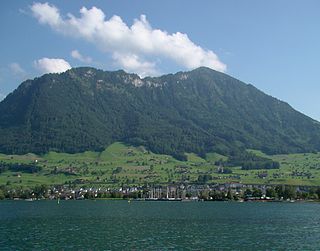
Buochs is a municipality in the canton of Nidwalden in Switzerland.

Wolfenschiessen is a village and municipality in the canton of Nidwalden in Switzerland. Besides the village of Wolfenschiessen itself, the municipality includes the settlements of Altzellen, Büren ob dem Bach, Dörfli, and Oberrickenbach, together with a large area of high alpine land, mountains, lakes, and glaciers.
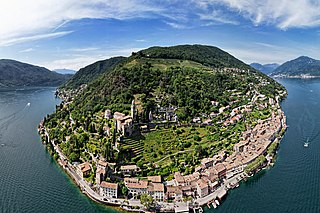
Morcote is a municipality in the Swiss canton of Ticino situated about 10 kilometres from Lugano in the district of Lugano on the shore of Lake Lugano.

Küssnacht am Rigi is a village and a district and a municipality in the canton of Schwyz in Switzerland. The municipality consists of three villages Küssnacht, Immensee, and Merlischachen, the hamlet Haltikon, the industrial area Fänn, and the alp Seeboden. It is situated at the north shore of Lake Lucerne and at the south shore of Lake Zug below mount Rigi.

Tannay is a municipality in the district of Nyon in the canton of Vaud in Switzerland.

Madulain is a municipality in the Maloja Region in the Swiss canton of Graubünden.

Falera is a municipality in the Surselva Region in the Swiss canton of Graubünden.

Churwalden is a municipality in the Plessur Region in the canton of Graubünden in Switzerland. It incorporates the former municipalities of Malix and Parpan.
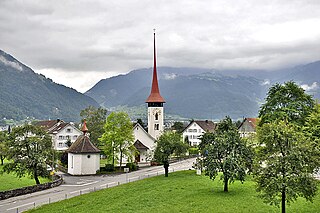
Seedorf is a municipality in the canton of Uri in Switzerland. On 1 January 2021 the former municipality of Bauen merged into the municipality of Seedorf.

Wartau is a municipality in the Werdenberg constituency of the Swiss canton of St. Gallen. The municipality consists of a number of villages on the eastern flank of the Alvier group, along the left shore of the Alpine Rhine.
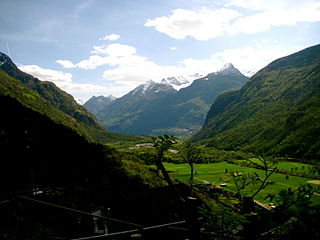
Malvaglia is a former municipality in the district of Blenio in the canton of Ticino in Switzerland. Since 15 March 2011, it is part of the municipality Serravalle. The reservoir Bacino di Val Malvaglia is located above the village of Malvaglia.

Semione is a former municipality in the district of Blenio in the canton of Ticino in Switzerland. Since 15 March 2011, it is part of the municipality Serravalle.
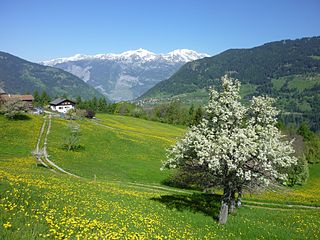
Maladers is a former municipality in the Plessur Region in the canton of Graubünden in Switzerland. On 1 January 2020 the former municipality of Maladers merged into Chur.

Fideris(Romansh: Fadrein) is a Swiss village in the Prättigau and a municipality in the political district Prättigau/Davos Region in the canton of Graubünden.
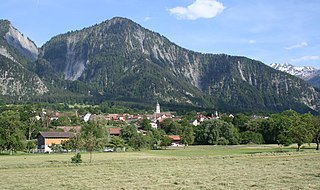
Zizers is a municipality in the Landquart Region in the Swiss canton of Graubünden. Zita of Bourbon-Parma, Empress of Austria-Hungary died in Zizers.

Casti-Wergenstein or Casti-Vargistagn is a former municipality in the Viamala Region in the Swiss canton of Graubünden. On 1 January 2021 the former municipalities of Casti-Wergenstein, Donat, Lohn and Mathon merged to form the new municipality of Muntogna da Schons.

Landquart is a municipality in the Landquart Region in the Swiss canton of Graubünden. It was formed when the municipalities of Igis and Mastrils merged on 1 January 2012 into the new municipality of Landquart. The municipality "Landquart" draws its name from a locality in the former municipality of Igis.
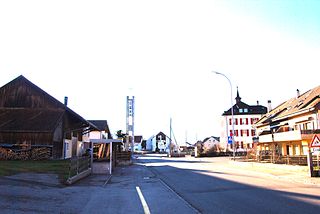
Val Terbi is a municipality in the district of Delémont in the canton of Jura in Switzerland. The municipalities of Montsevelier, Vermes and Vicques merged on 1 January 2013 into the new municipality of Val Terbi. On 1 January 2018 the former municipality of Corban merged into the municipality of Val Terbi.
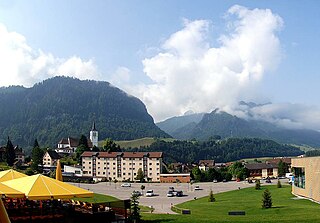
Val-de-Charmey is a municipality in the district of Gruyère in the canton of Fribourg in Switzerland. On 1 January 2014 the former municipalities of Cerniat and Charmey merged into the municipality of Val-de-Charmey.





























